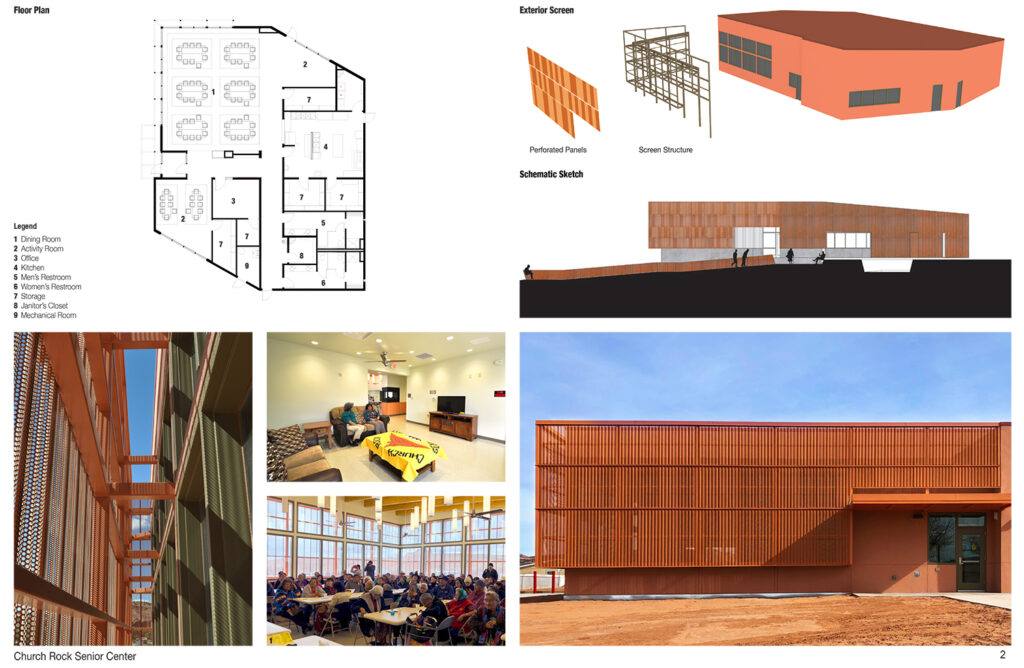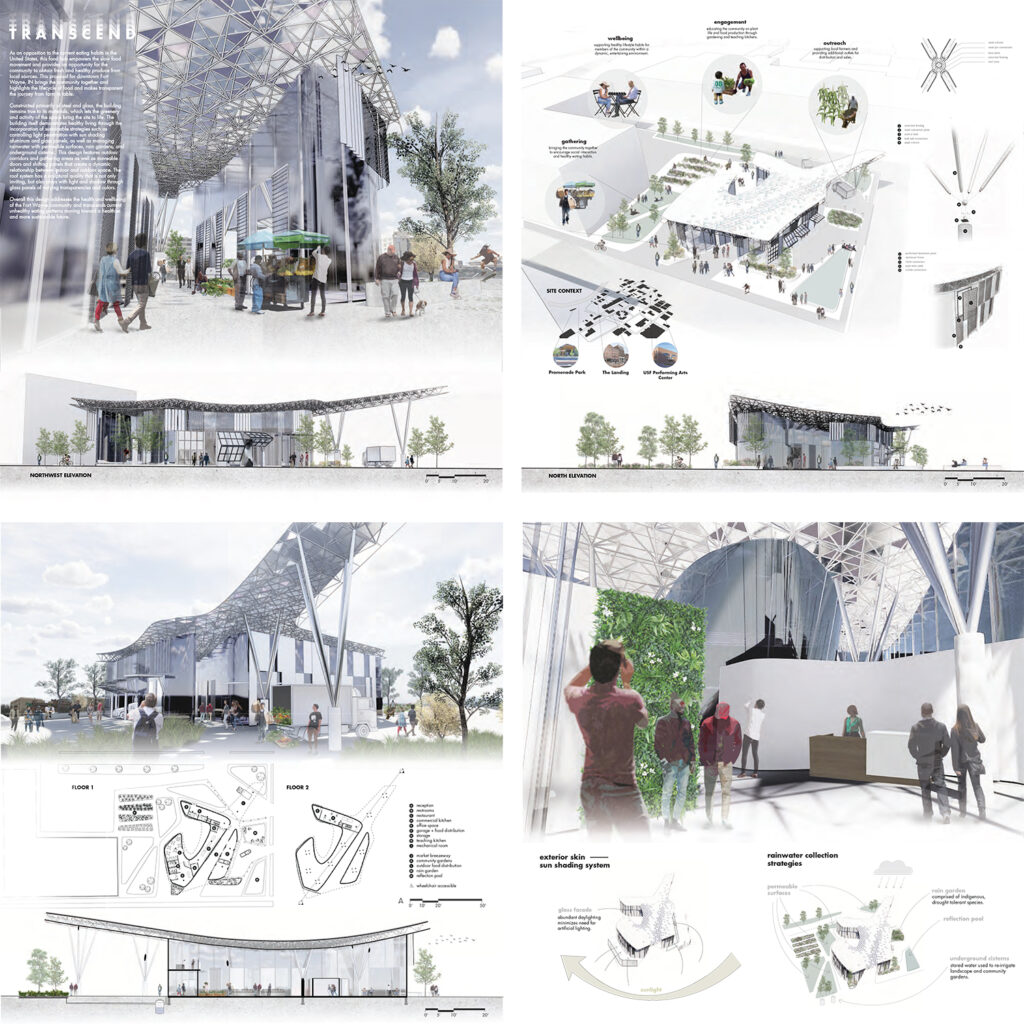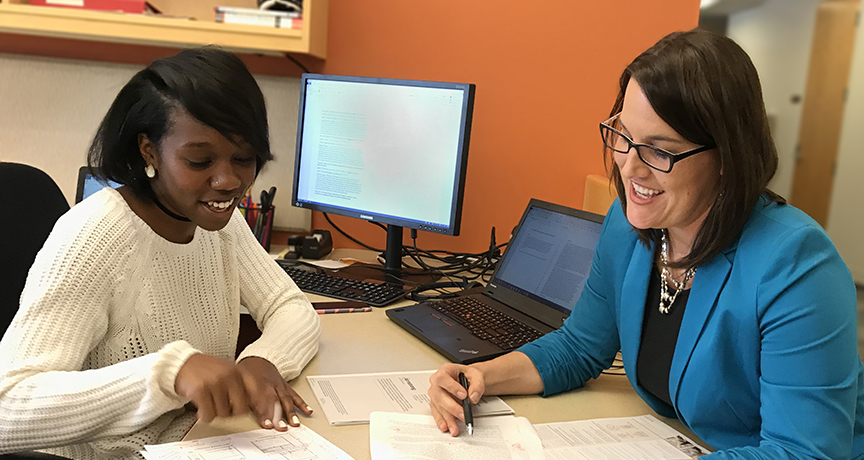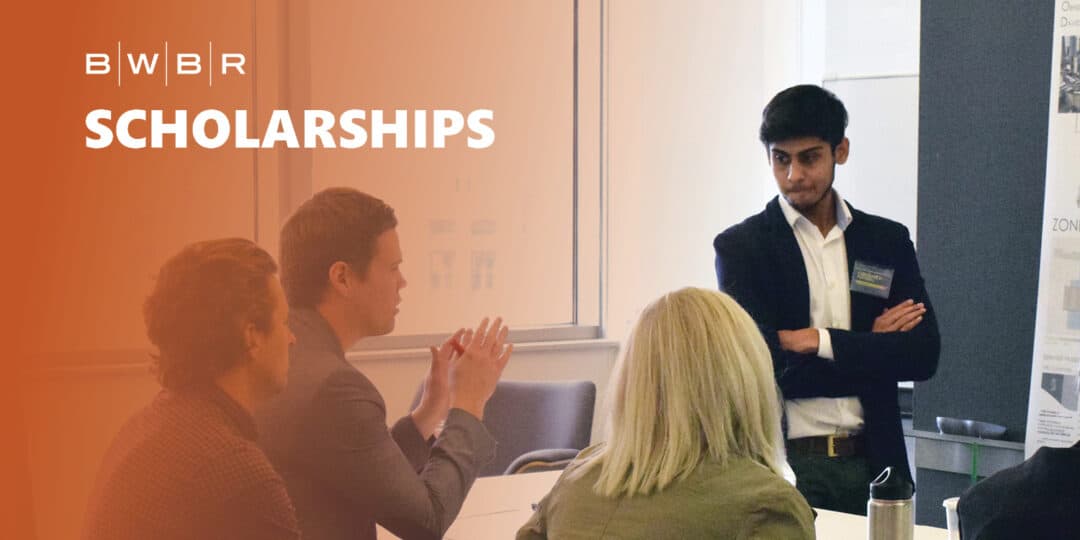BWBR is excited to recognize the achievements and talent of the recipients of the firm’s first-annual equity scholarships. Each award is designed to support equity in the built environment by providing a $1,000 prize to a student of architecture, interior design, or graphic design. Applicants submitted both a personal statement and a sample design project, and we were truly impressed by the caliber of submissions for these inaugural awards.
The Dorothy Brink Ingemann Scholarship for Gender Equity in Design is awarded to a woman studying architecture, interior design, or graphic design. This year’s Dorothy Brink Ingemann Scholarship recipient is Allison Loth, an architecture undergrad student at Ball State University. Allison’s submission focused on food equity in urban environments, and she showcased her talent and creativity via an innovative food hub design for downtown Fort Wayne, Ind.
The Milt Bergstedt Scholarship for Racial Equity in Design is awarded to a BIPOC student in a graphics, interior design, or architecture degree program. This year’s Milt Bergstedt Scholarship for Racial Equity in Design winner is Freeland Livingston, a Master of Architecture student at Southern California Institute of Architecture. Freeland’s submission highlighted his work on the Church Rock Senior Center in Church Rock, N.M., which serves the elderly of the local Navajo community.
The Role of Design in an Equitably Built Environment
For Loth, “When we think about how architecture and design play a role in the built environment, we have to think about what equity is, itself. To me, it’s about accessibility and opportunity, and how we give people of all different walks of life – whether it’s based on race, gender, or disability – accessibility and opportunity into different spaces. Design plays a huge role in that. It’s more than just one project on one site. What you do with that site impacts the greater context – an entire culture, entire community, and the society around it.”
Livingston agreed, adding, “I think it’s important to have all members involved, like the community. The project I selected for the scholarship entry was a community effort. It was a long process, and by the time I got into it, it was already 20 years into the project.”
Livingston also noted that, “Funding situations are always interesting on the Navajo reservation because sometimes it’s tribal, sometimes it’s state, sometimes it’s federal. The fascinating thing is that there’s so many people that have worked on each project, and because most of the funds are public, there’s a lot of community engagement and leadership. By the time the project’s done, it’s always a joyous celebration, especially in the Navajo Nation, because we’re still a developing nation. So, we’re trying to create a more equitable environment and also increase the quality of life through design and the built environment.”
About the Winning Submittals
Freeland Livingston | Church Rock Senior Center

Livingston described how his submitted project, the Church Rock Senior Center, was started in the late 1990s. Over the years, the project’s vision and community needs changed, along with ongoing efforts to secure project funding and various design iterations.
“By the time the funding came into play, we wanted to start over because the last design didn’t really fit the community needs anymore. So, we began on a whole new design process with the elders and the community leaders,” said Livingston. “The project was really great because we took design ownership of what we wanted to do with it, but we thought about it more as a place of preservation because for us, the elders hold the knowledge of the culture, of the language, of Navajo life. We needed to create a safe space for the elders and for them to be able to have a nice building, like their second home.”
Livingston emphasized the importance of defining what architecture means to each unique person: “For a lot of us, our only reference to architecture is our homes. Throughout time as Navajo people, we don’t really have any architectural styles; we only have our dwellings as the base idea of what architecture is, so that’s what we tried to implement.”
Livingston was happy to share that the project was a community success. Completed in 2017, the facility sits on a hill and overlooks the thriving community. It’s a living reminder of how he approaches design.
Allison Loth | Local Food Hub Within An Urban Environment

Loth’s project focused on creating an urban food hub in Fort Wayne, Ind., specifically studying how design can bring farmers, food producers, and local food in general to urban cities.
“I’ve noticed across the United States that there’s an issue with accessibility to fresh local food, especially in really dense, urban cities. There’s a lot of fast food or you have to drive 10 to 20 minutes outside of the center of downtown to get to a grocery store that isn’t upscale,” Loth said.
Loth’s project included finding ways for people to get fresh food, and then share the food to come together as a community.
“Programmatically, I wanted to demonstrate the transition from farm to table. So, there are spaces where farmers could pull up in their trucks and sell food directly out of the beds, like a farmers’ market could function. There were teaching kitchens and a restaurant, so people could learn how to prepare this food. There are also community gardens where people could come and learn how to grow their own gardens in their backyard,” said Loth.
Loth sees this project as something that could come to life at a number of sites across the United States. She hopes that dealing with the issue of food accessibility through design will give people equal opportunity fresh food.
How to Welcome More Diversity into the Profession
We asked how the two scholarship winners think the architecture and design industry can become more inclusive.
Loth said, “I think architecture is years behind other industries in terms of diversity. It’s not an immediate change we can make, but I know there is some progress in terms of architecture programs across the United States. We’re getting closer to the 50/50 ratio of men to women, but in terms of people of color, we’re far behind that 50/50 ratio. So, we have a lot of work to do in that sense, too. Right now, our profession needs to continue to reach out to communities and young people across the United States and find ways to get them involved in architecture and learn about architecture, starting with talking to middle schoolers and high schoolers.”
Loth continued, “How do we get people into architecture programs, so that in 20 years, we’re going to reap the benefits of diversity? I think it’s important that we design equitably, but that we don’t design by making assumptions or generalizations.”
Livingston underscored the importance of visibility. “I feel like architecture can be insular, where our discourses are mainly amongst other architects. I have noticed that with native architecture, as well, where we only speak to each other as native architects, but we never take that discussion back to our own communities or our own reservations. So, we definitely need to bring more visibility to that discussion and to the local population, because if we’re only talking to ourselves, we’re the only ones getting the message.”
Both Loth and Livingston agree that the architecture industry needs people to talk to people with different life views and experiences, including getting younger generations involved in design conversations and mentoring young designers. By doing the hard work today, we can all create richer, more inclusive environments going forward.






